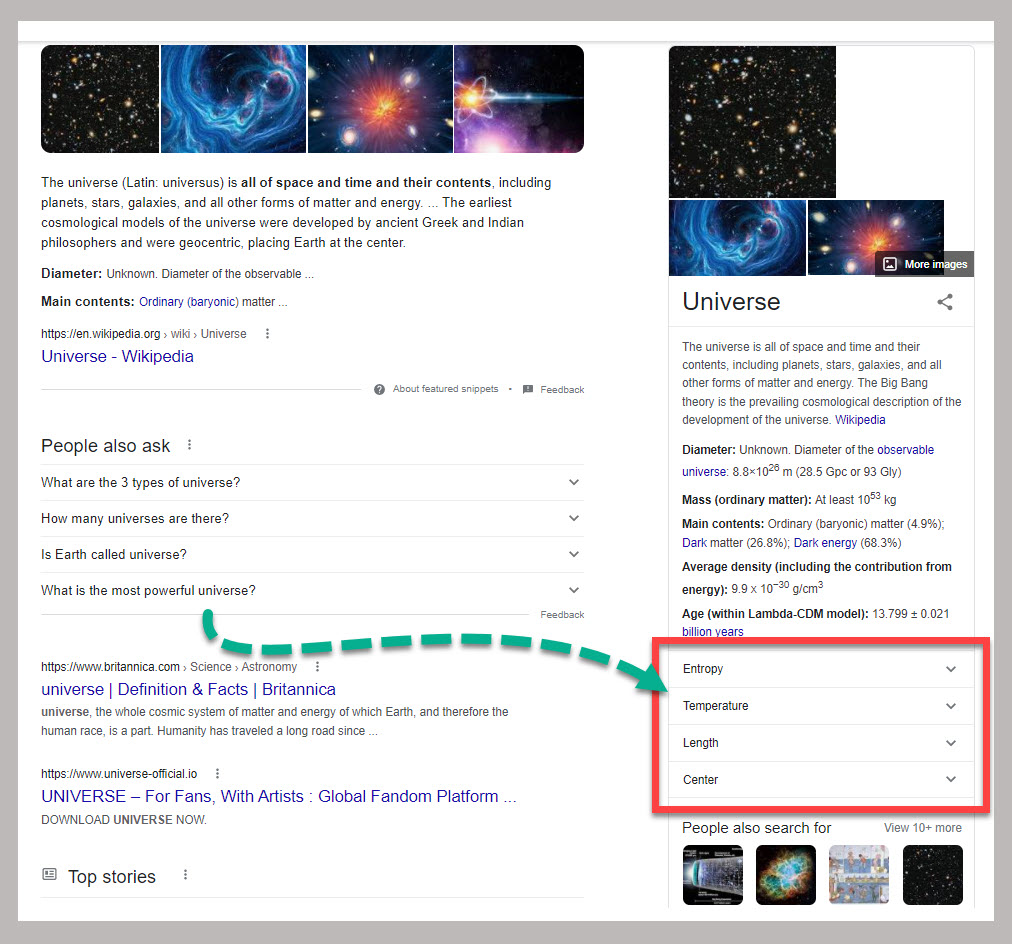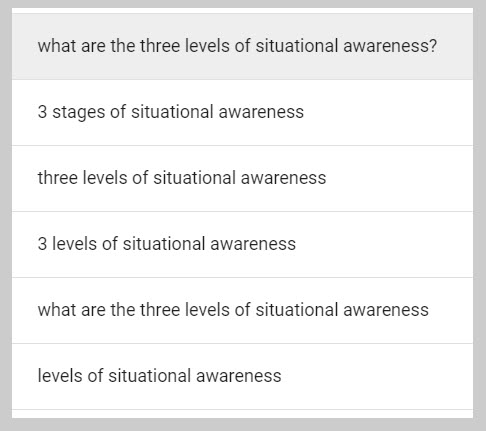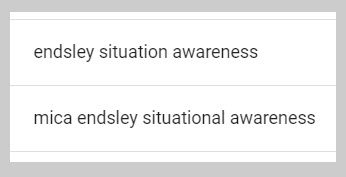Posted by
Darrell Mordecai
Okay, so you’re getting into semantic SEO. Great idea.
As Google and other search engines attempt to understand content the way a person does, applying a semantic SEO strategy is becoming essential to any robust SEO strategy.
In this post, I’ll get into the difference between keywords and topics and explain why focusing on topics could revolutionize your SEO and potentially bring you way more traffic.
I don’t intend this post to be my final word on covering topics. It’s intended to be a general overview that will give you a solid understanding that you’ll need to build content silos that get massive traffic.
And, on with the show.
Keywords vs Topics
Before I get into the strategic aspects of this blog post I first have to get into a common bear trap that I myself walked into many a time. To save you the anguish of stepping into it, you must understand the difference between keywords and topics.
Now, if you want a solid understanding of the context of this post, it’s a great idea to first read through my previous blog post on semantic search. In that post, I go into how search engines are using entities to understand search queries and content to bring better search results. Understanding that will help you to understand the difference between keywords and topics.
Read it? Great. Let’s go on.
Okay, for those of you who bookmarked it for later (you know who you are), here is a brief overview.
Keywords in the Dawning of the Age of Search
In the caveman days of Google search and SEO, Google categorized search queries and content by matching keywords in queries to keywords in the content.
In those days, in order to be successful in SEO, you had to signal to Google what your content was about. You would achieve that by good old-fashioned old-school SEO.
This meant optimizing for one keyword per page and including the keyword in prominent places such as title tags, H1s, the first paragraph, alt tags, etc.
By doing these optimizations, SEOs saw their content rising to the top of Google. What’s more, by adding authority signals by doing link building, SEOs were able to significantly influence the search results.
This approach is keyword-focused SEO.
Things progressed for a while. But at some point, I noticed that the old optimizations weren’t working as well as they used to. I naturally chalked it up to rising SERP competition.
But then I’ll never forget the day that I outranked a solid domain with a much weaker domain. I outranked a BBC article with a DA 14 website.
What’s more, I did it in a matter of days. What I learned from this little anecdote was that Google was using different signals than what I’d been led to believe. (I also learned that you can do impressive things by employing blind luck, but I’ll leave that little SEO lesson for another day!)
Now, before I go any further, the old optimizations are still important and you shouldn’t neglect them. But it’s important to understand that optimizing your title tags and H1s are optimizations that fit into a broader context. Build out your content within this broader framework first and optimize your title tags with that in mind.
I’ll now cover what topics are and why they mean everything to your SEO.
SEO Topics
Over the years, Google has been attempting to understand content in a way that a human might.
Ambitious? Absolutely.
The way Google attempts to do this is by keeping a big database of entities (known things) in a knowledge graph. The database includes the entities with their meanings. Google also stores information about how these entities relate to one another.
They relate to one another in two ways…
Firstly, entities with similar attributes are grouped together. In other words, apples and oranges are grouped together as fruit.
Secondly, information is also stored on how they fit into a hierarchy. This simply means they are grouped into topics and subtopics. Google calls this the Topic Layer and uses the Topic Layer to add subtopic links to the search results.
For example, in the screenshot below, the Knowledge Panel for the query ‘universe’ Google presents sub-topic links, including:
- Entropy
- Temperature
- Length
- Center

This has changed SEO forever.
Now a search query is a query about an actual entity. Google understands what the entity is and how your query is requesting information about the entity. Since this is true, you might notice something amazing. If you look in your Search Console account, your blog post about a topic might be ranking for many related search queries.
So for instance, if you were to optimize your content around the search term ’3 levels of situational awareness’ your Search Console account might show this:

In the screenshot above, you can see six different search queries, all of which are different ways of saying the same thing. It’s important to know that only one of these terms actually appears in the article or in any of the metadata.
The way Google does this is it ‘understands’ that all of these queries are semantically the same. They are all different ways to request the same thing. Google also ‘understands’ that the answer to all these queries appears in your content about situational awareness. This means if Google wants to rank your content, it’s likely to rank for all of these terms and not just your target keyword.
Now let’s take this further. If you scroll down in Search Console you’ll notice this:

It’s important to understand that neither of these terms appears in either the body of the article, the title tag, alt tags, or any other metadata. So how exactly did Google figure this out?
The answer is that situational awareness is an entity that exists in Google’s Knowledge Graph. What’s more, Mica Endsley, a scientist who outlines a model of situational awareness, also exists as an entity in Google’s Knowledge Graph. As a result, Google has linked these two entities together. The article itself is about situational awareness and in one place mentions Mica Endsley. As a result, Google presents the blog post in the results pages for terms that include ‘Mica Endsley’ in the context of situational awareness.
Understanding how this works is the first step in optimizing for topics and not keywords. So let’s see what this all means for your SEO moving forward.
Topical SEO Strategy vs Keyword SEO Strategy
If you recall at the top of the blog post I mentioned that there is a bear trap that I have often fallen into. Well, now that I’ve covered the difference between keywords and entities, I can now explain.
Understanding the difference should inform you that the whole strategy for ranking content is different. By only optimizing for keywords, you’ll not be giving Google what it needs to rank your content.
Keyword Strategy
A keyword-focused strategy relies on you optimizing pages to rank on specific results pages that represent specific keywords.
You do that by adding your keyword to the important places in your content.
Where this differs from a semantic approach is you are treating each keyword in isolation. In other words, you are trying to rank your content for a keyword independent of the meaning of that keyword or how it fits into the greater topic.
With this mentality, each keyword will have its own metrics and if you want to improve your traffic, you have all the old school methods at your disposal. In other words, include your keyword in relevant places such as title tags, H1s, etc.
What’s more, you can also improve your quality signals by doing link building.
If you understand how Google stores entities in its database and how Google includes how these entities relate to one another, you’ll quickly realize that this keyword approach is missing the big picture.
It also means that Google Search Console data will leave you scratching your head in confusion. In other words, how does Google rank your content for keywords that don’t appear anywhere in your content?
This forces us to re-examine our overall SEO strategy. Enter topics, not keywords.
Topical Authority – Your Semantic SEO Strategy
Now let’s compare a topical approach to a keyword-driven approach.
As search has evolved, the goalposts have evolved with it.
Given that Google ‘understands’ entities, and ‘understands’ how they relate to one another, you must incorporate that into your overall strategy. The reason is Google is now assigning a bigger meaning to search queries. Search queries are now queries that relate to the entities themselves, not just the keyword strings.
As we saw before, search queries that are different ways of saying the same thing are grouped together. The reason is that Google is able to figure out the bigger picture meaning.
This means you should not create content for each and every keyword variation. Those days are long gone.
In fact, when planning your content strategy, stop thinking so much about keywords and focus on the topic as a whole. (Keywords are still important, but you must first plan and understand the topic.)
Practically, this means you should be picking a single topic and creating as much content as you need to cover the entire topic. Now to do this convincingly, it’s likely that you need to create a whole network of content, set out in a logical flow that allows your site users to answer any question on the topic that they like.
So, instead of optimizing each blog post around a single keyword and seeing that piece of content in isolation, you are now focusing on how that blog post fits into the broader topic. The keyword you choose to optimize your content around is now a way of identifying how your blog post fits into the topic as a whole.
If you do this convincingly, Google will see your site as an authority on the topic. This is called topical authority.
Okay, you got the idea, but how exactly do you do that?
It all starts with topical research. Here is a brief overview to help you understand the process in general. I will get into more specifics in a later blog post.
Topical Research (Before Keyword Research)
Topical research is a way of understanding how Google understands the topic as a whole. This includes figuring out what entities Google considers to be related to your topic as well as finding all the related sub-topics.
This can be found in a number of places. You can look at:
- Knowledge panels
- Keyword research tools
- Google’s Autosuggest and Related Topics features
- Google Trends Related Topics and Related Queries reports
This should give you a great overview of all the topics, related topics, and related entities in Google’s Knowledge Graph.
With this overview, you can now plan your content.
Plan Your Content
Having an overview of how Google understands your topic helps you understand what specific content to create.
Since you are trying to be an authority for the topic itself, you need to figure out how to create content assets that cover all of these topics and answer every question.
This means you should create a list of content ideas based on your research. For instance, each question that appeared in the People Also Ask box represents a question that could be the subject of a blog post.
It’s important to note that not every topic or entity will need a separate blog post. Some content assets will cover more than one topic or entity.
Now, before you begin to create your content, you must also plan the structure of the content by creating a content map.
Create Your Content Map
With all of your content ideas generated in the previous step, you are almost ready to start writing. But, just publishing a large volume of content is not enough. You must create a well-structured network of content.
The key to getting this right is to create a mind map based on a logical hierarchy. This content structure will inform you how you should set up your internal links.
Think of the top of the hierarchy as your main topic. Then use your research to identify sub-topics and supporting content for those sub-topics.
For instance, if you are creating content around the entity ‘ training’, you’ll notice that training can be broken down into different types of training. This means you could potentially create a sub-topic that covers ‘types of training’. This could be covered by a blog post that explains the different types of training.
You could then create separate supporting content that explains each training type. This means you could create content for:
- Behavioral training
- Obedience training
- Tracking
- Therapy training
- Agility training
- Service training
Once you have this topic / sub-topic structure clear, you must create an internal link structure that reflects this tiered structure.
This is a brief overview of the topical strategy. There is a lot more to explain and I’ll break this down further in a later blog post.
Topical SEO – Think Big Picture

In this post, I’ve tried to pull back a strategic angle to semantic SEO. To do that I covered the basic differences between keywords and topics. This led us to examine how modern search engines work and why that necessitates a whole new way of looking at content creation.
Semantic SEO has made SEO no longer about creating a single content asset per keyword and worrying about cannibalization. It’s now about creating a network of content that serves your audience completely. In other words, aim to make your website a one-stop-shop for your topic.
This will not only create trust and authority with your audience, but it’ll also help build authority in Google.
Now that you understand the big-picture semantic SEO strategy you are ready to do the research to achieve topical authority.

